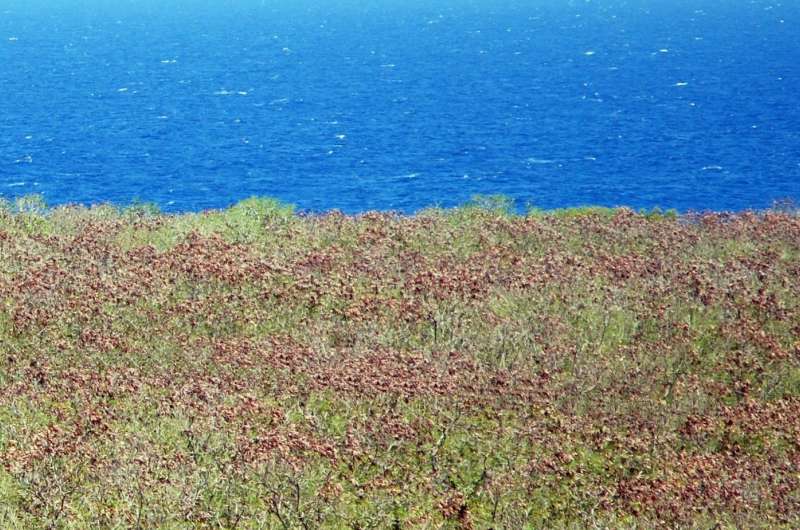Invasive tropical legume alters soil nitrogen dynamics

As global change continues to be studied, the scientific community needs quantitative assessments to inform mitigation decisions and predict outcomes. Because restoration and management plans designed to address global change issues are resource-limited, decision-makers require empirical information to best prioritize. Invasive alien species comprise one of the components of global change that results from the human footprint. For this global threat, information is needed to identify the most problematic species and determine the means by which they damage invaded ecosystems.
Islands are highly vulnerable to the changes that result from invasive species. However, the actual research devoted to landscape-level processes following the influence of invasive species has been heavily biased toward continental localities. Recent research by the University of Guam has addressed this bias. The experimental results appeared in the September 2016 issue of the international journal Communicative & Integrative Biology.
Authors Thomas Marler, Nirmala Dongol, and Gil Cruz compared soils in sites where the woody legume tree Leucaena leucocephala had displaced native tree species with adjacent sites where a healthy native forest tree cover persisted. Under these small island conditions, a clear divergence in several components of the chemical profile were revealed. As predicted, various workings of the nitrogen cycle were among the most affected soil traits.
Habitats that are dominated by legume trees tend to exhibit greater soil nitrogen than habitats that do not contain legume trees. The Guam team found the opposite. "We were surprised to find that the soils influenced by this non-native legume tree contained less nitrogen than the soils beneath native tree cover," said Marler. The research further revealed how various components of the nitrogen pool may explain the unexpected results.
The microbiological processes that take stable forms of soil nitrogen and transform them into more mobile forms were elevated in the soils influenced by the invasive legume tree. These same transformations were muted in the soils beneath the diverse native tree cover, allowing more of the nitrogen to remain in the stable forms that extend the soil residence time.
This research on one of the most problematic invasive plant species in western Pacific islands illuminates several important issues. First, Leucaena leucocephala trees may exert their greatest influence on soil chemistry by changing the pools of soil microorganisms that control the transformations in soil chemistry. Second, the international coalition of invasion ecologists need to consider augmenting measurements of static ecosystem traits with measurements of dynamic ecosystem traits. Third, planners that implement future restoration plans for Guam, which include landscape-scale efforts to remove invasive plant species, need to consider legacy effects of invasive plants. Eradicating the alien plants alone cannot restore habitats, as the transformed soil properties of invaded ecosystems may not be restored for many years following selective plant removal.
More information: Thomas E. Marler et al, and adjacent native limestone forest habitats contrast in soil properties on Tinian Island, Communicative & Integrative Biology (2016). DOI: 10.1080/19420889.2016.1212792
Provided by University of Guam




















